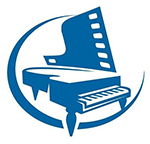As a young teenager, my first concerto moment was the Bach Concerto in F Minor, movements 1 and 2. It was a stretch even then and a whole new world of learning pieces with more length. Add to that my first experience playing with a second piano, and you have a full year of learning and navigating a new genre. It was imperative to arrive at the early advanced level before even considering delving into concerto work.
Teachers and young students today have so many more options! Junior Concertos have been written by so many of our pedagogues and almost every publishing house has at least a few in their catalog. Our youngest students can enjoy learning the Little Concerto in C by Rozin. The Haydn Concerto in C is accessible to early intermediate students, particularly the middle Minuet and Trio movement (Boosey Hawkes). Careful selection of the Haydn Concertini will glean several workable movements without too much ornamentation.
Once students enter the intermediate level, there are many options and choices. Here is a brief list:
- Concertino in Dance Styles by Melody Bober (Alfred)
- Concertino in Jazz Styles by Martha Mier (Alfred) This lists as late elementary.
- Concertino in Latin Styles by Wynn-Anne Rossi (Alfred). This lists as Late elementary.
Moving up the level ladder:
- Country Concerto for Young Pianists by Howard Kasschau (Hal Leonard)
- Piano Concerto Op. 44 by Berkovich (Hal Leonard) This is a gem!
- Concerto in G by Dennis Alexander (Alfred) Another accessible gem. Look at the middle movement.
- Concertante in G Major, by Dennis Alexander (Alfred)
- Haydn Concerto in F (International Music, NY)
The above list is just a starter for students up through mid to late intermediate. Before you decide you couldn’t do any concerto work because you only have one piano, consider that the second piano part can be played on a full keyboard. It’s enough to see you through without having to rehearse at a music store. Another idea is to borrow a keyboard from a colleague for the period of time you need to work the parts together. A concert with students playing concerto movements and perhaps younger students playing duets can provide a wonderful change for your studio. If you begin now, you can have those concerto movements up and running by Thanksgiving. What a great idea for a winter recital!
If you live near a sheet music store, check out the concerto bin. If not, you can check out the concerto offerings online at the major publishing houses–Alfred, Kjos, and Hal Leonard. Their publications alone will get most studios with many intermediate students connected to a concerto movement that builds their performance skills and confidence. Happy ensemble preparation!
Musically yours,
Dr. Carol Ann
